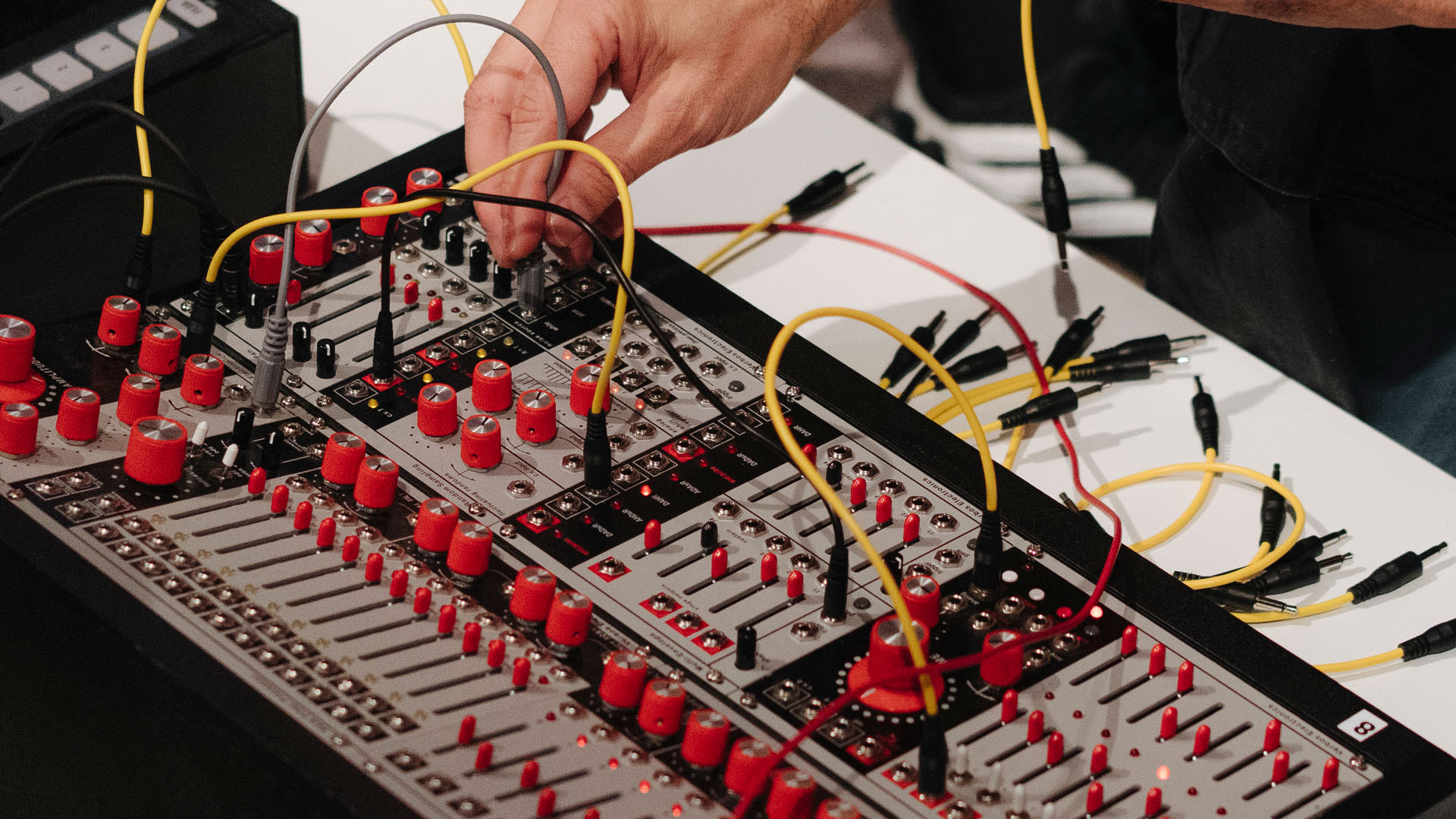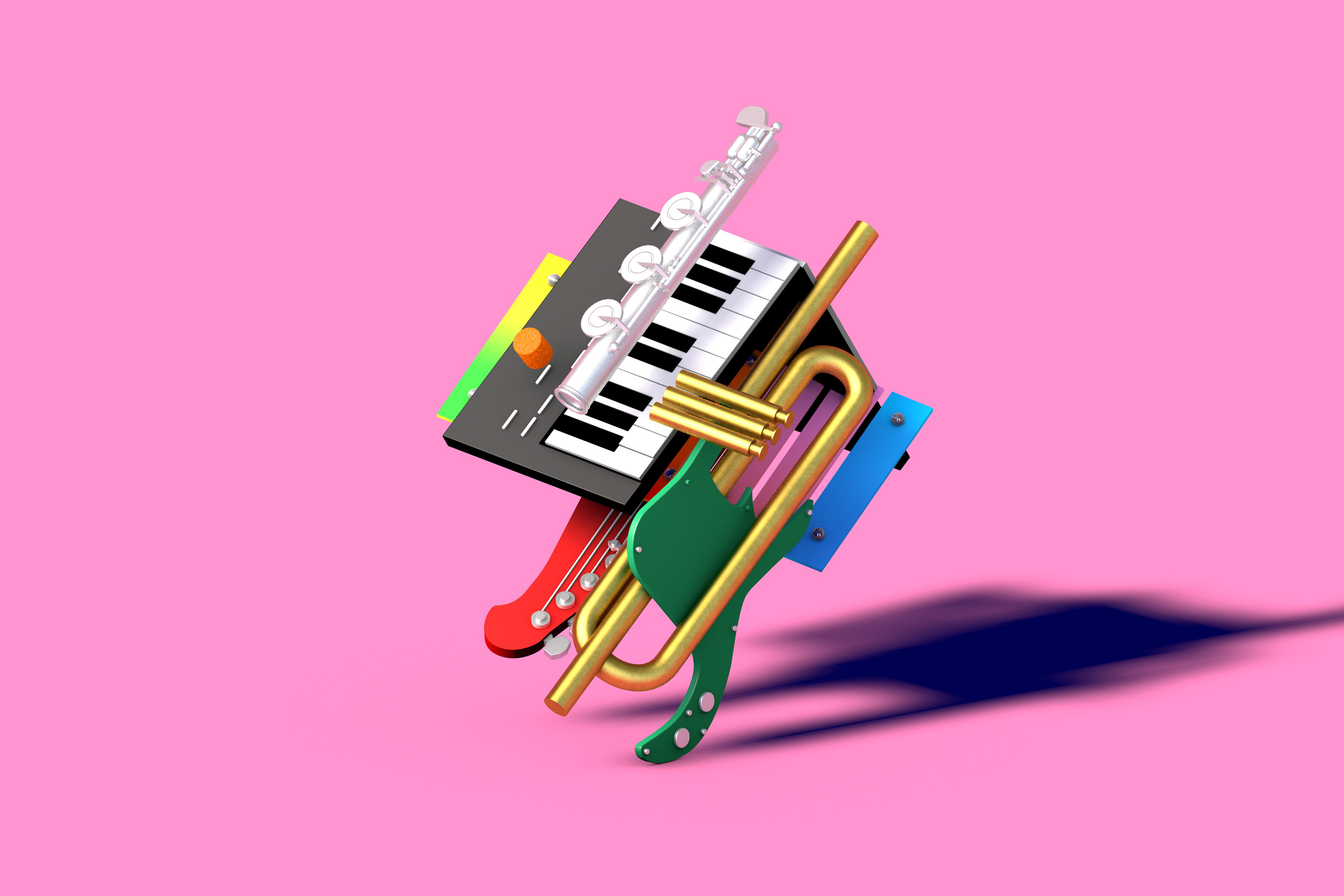How to Build a 5,000 Year Old Instrument in Four Hours
Dunn Johnson recently went to build a guitar at Yuri Landman’s DIY instrument-building workshop. He came back with a whole lot more than he expected
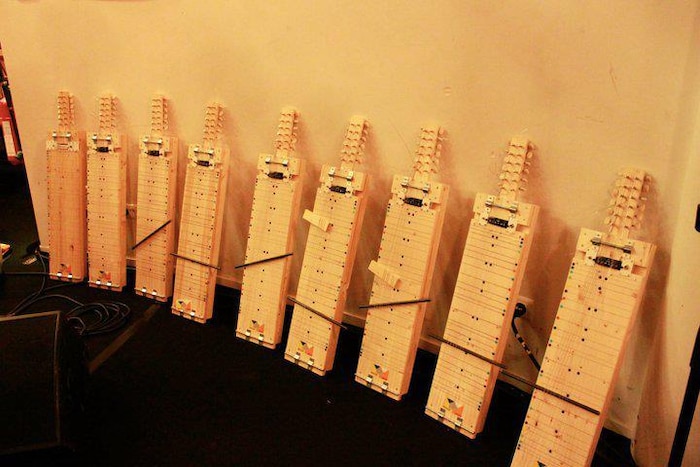
“Sonic Youth were very aware of what they were doing,” Yuri Landman explains, at some point during his DIY instrument-building workshop. “They’d played in Glenn Branca’s guitar orchestras, so they knew all about harmonic theory and extended guitar techniques,” he continues. “Thurston and Lee knew that if certain frets were jammed with a screwdriver or drum stick, they’d get a nice sound. It might have been a punk rock image, but it was also very harmonic.”
He puts on Sonic Youth’s “The World Looks Red.” Though the chords and notes have a musicality and tone, it doesn’t take a trained ear to notice an alternative sound. Most Sonic Youth fans are aware of the group’s alternative guitar tuning and technique, but few realize how precise and practiced it is. It’s the same for Landman: The experimental “noise” he creates as a solo artist, or with his band Bismuth, follows very strict musical rules. Just like Sonic Youth, his punk rock sensibility is crafted around a coherent musical system.
A few weeks ago I went to Landman’s DIY instrument-building workshop in Berlin. As I entered with the four other participants, a few battered suitcases lay open, their contents a jumble of screwdrivers, drills, wood scraps, guitar strings and wiring. Resting neatly on the wall next to this mess, though, was the full range of instruments that Landman had designed over the years. The White Eagle Tailed Bridge guitar, the Chorus monochord, and the Home Swinger – each with their own distinct shape and characteristics.

That night, the five of us – some with musical backgrounds and others not – built Landman’s Caterpillar Drum guitar. Two pickups and two outputs make it one of the more complicated workshops. The soldering is especially involved, and throughout the course I ended up with burned fingers and cuts on my hands. (I even stabbed myself in the thigh with a screwdriver.)
Landman developed an instrument with 12 strings and 23 harmonic positions that greatly increased the range of sounds that could be produced.
An academic and practical knowledge of non-traditional tuning and playing techniques has motivated much of Landman’s writing, lecturing and instrument building. His background in physics helped him understand and implement musical scales based on mathematical fractions. It was different from the 12-tone Western scale, which at some point for reasons unknown, deviated from mathematics and developed its own (and, according to Landman, flawed) musical regime.
Using a mathematical scale, Landman developed an instrument with 12 strings and 23 harmonic positions that greatly increased the range of sounds that could be produced. He called it the Moodswinger, and donated to Liars in the mid-’00s. Fresh off this success, he contacted the management of Sonic Youth who, within minutes of sending the email, had put him in touch with Lee Ranaldo. In 2006/7 Landman built the Moonlander – an 18 string, bi-head guitar – and handed one to Ranaldo and kept the only other model for himself.
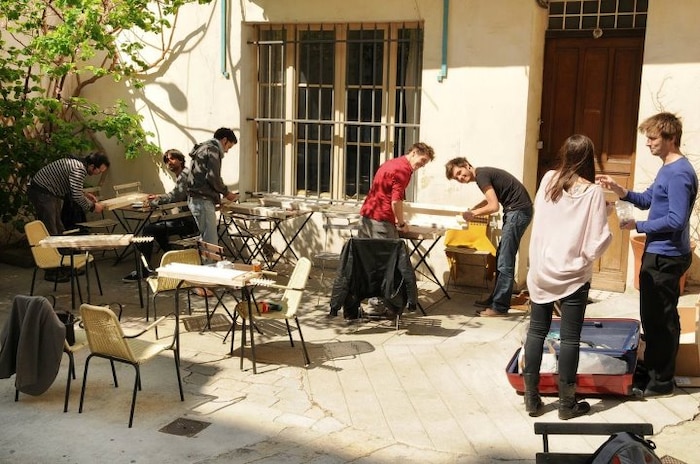
On continuing his research, Landman discovered that his mathematical scale and instruments were actually already part of a long tradition of ancient Eastern music. “I nearly fell off my chair when I discovered the ancient Chinese instrument – the guqin. My Moodswinger was an exact copy of this, only it was 5,000 years old... Eastern music is the complete opposite of noise music, but my Moodswinger and the guquin are essentially the same instrument and meet each other at the opposing side – like a Möbius strip. There is a paradox between my noise and Eastern harmony.”
Landman cites 20th century American composer and instrument builder Harry Partch as an inspiration for his own philosophy. Partch’s 1947 book, Genesis of a Music, is Landman’s loose manifesto. In it, Partch urges students to question everything. “The very fact of a piano.” “The tones of its keys.” “The music on its rack.” And, most importantly, “they must question, constantly and eternally, what might be called the philosophies behind device, the philosophies that are really responsible for these things.” Though the two never met, it’s easy to see that Landman is the sort of student that Partch envisioned.
Eastern music is the complete opposite of noise music, but my Moodswinger and the guquin are essentially the same instrument and meet each other at the opposing side – like a Möbius strip.
Landman refers to what we’re building this night as “Ikea instruments.” “Ikea” because the process is based on easy-to-follow instructions that use very basic materials (and also, I assume, because there is a lot of frustration and swearing when the parts don’t fit). The idea for workshops emerged after Landman built a modified version of the Moodswinger in under two hours. To date, he has developed a range of eight that can be built in one sitting. He pre-cuts and drills pieces of softwood and supplies tuning knobs, strings, bridges and pickups and brings all the necessary tools to put them together.
The Caterpillar Drum guitar only has three pieces of wood: one long plank and two smaller pieces placed at either side. Before stringing the guitar we put black stickers on the fretboard that correspond to the precise fractions of the Eastern, mathematical scale. For reference, we also place coloured stickers on the corresponding Western scale. There are a few points where the different musical traditions overlap, but for the most part the two scales are out of sync.
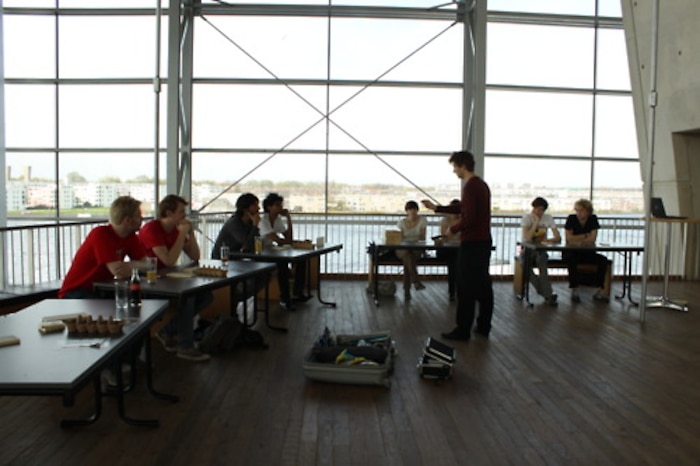
After stringing the instrument we create two mini-bridges that can be moved up and down the fretboard to produce complementary (or conflicting) harmonics. (These function in the same way as Sonic Youth’s screwdriver and drum sticks.) While we work, Landman is constantly talking. He explains that Hendrix was the first mainstream artist whose guitar technique (consciously or not) was at the intersection of Eastern and Western harmonics. His tiny finger slides up and down the fretboard would make up the distance between the two scales, adding a distinct colour and tone to his playing.
There’s nothing ear-pleasing about the first notes I play on my new guitar.
He shows us similar techniques that could be used to make a range of atmospheric sounds on the Drum guitar. Moving the bridges to certain fractions on the mathematical scale will produce one chord, but threading a coin through the strings and hitting them might produce a beautifully resonant “gong” sound. The list of playing methods Landman takes us through is long and will take months to explore.
“When you listen to Glenn Branca and early Sonic Youth there is noise, but there is a pleasing aesthetic in this noise. It’s actually the Chinese harmonics in the tone,” he says. There’s nothing ear-pleasing about the first notes I play on my new guitar. But at the very least, the workshop and the instrument serve to add a layer of complexity to certain types of noise music, which had previously been difficult to process. “Musicality,” I learned, is not only a subjective matter but also a matter of tradition.
